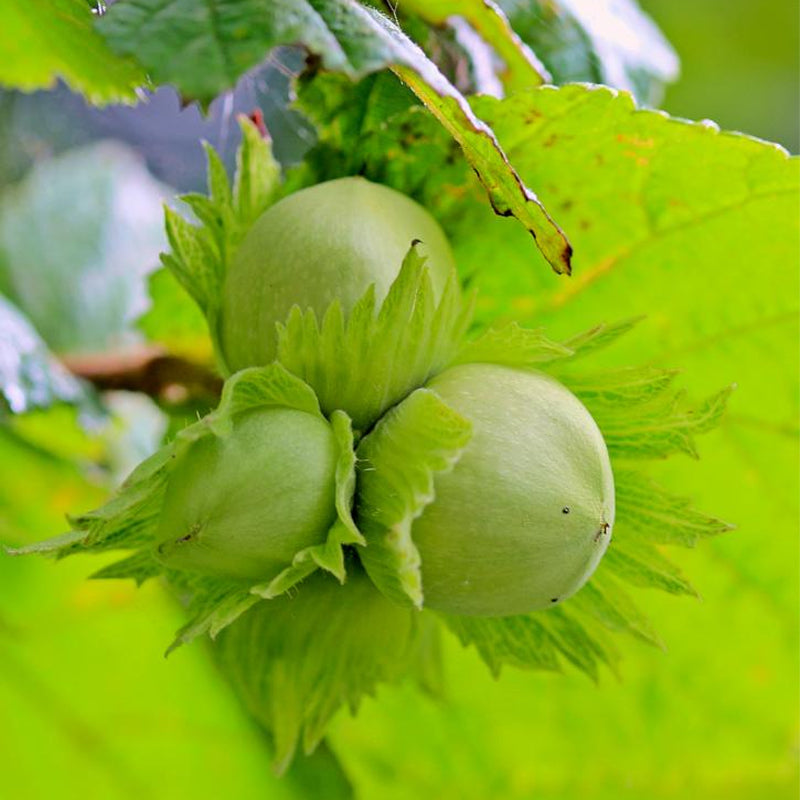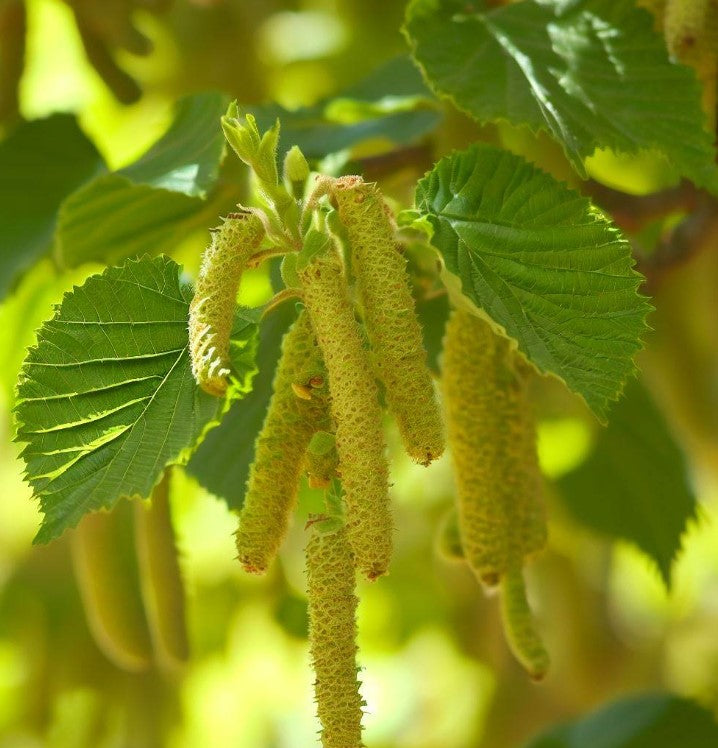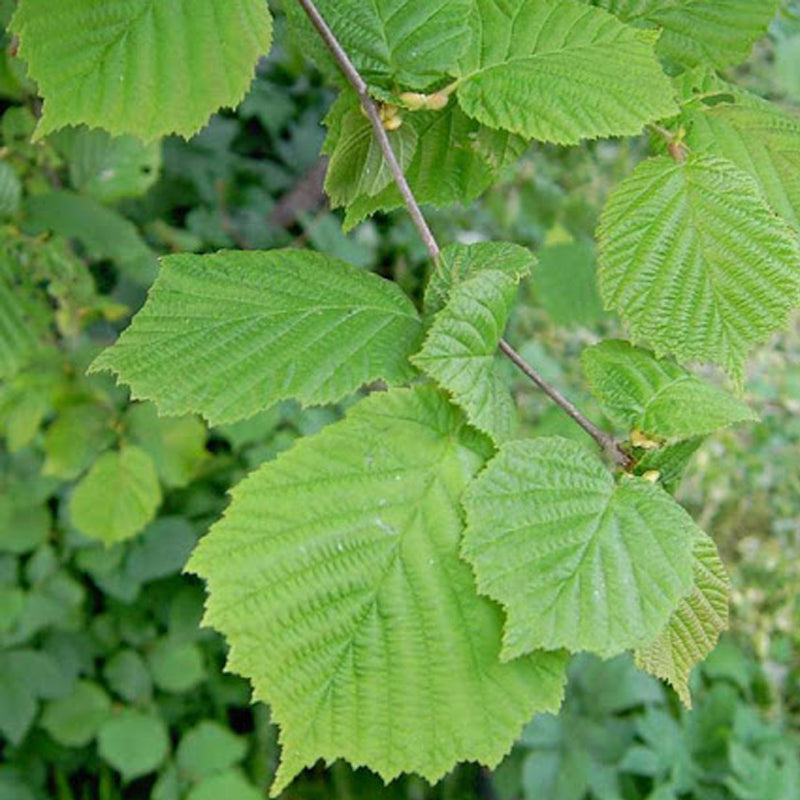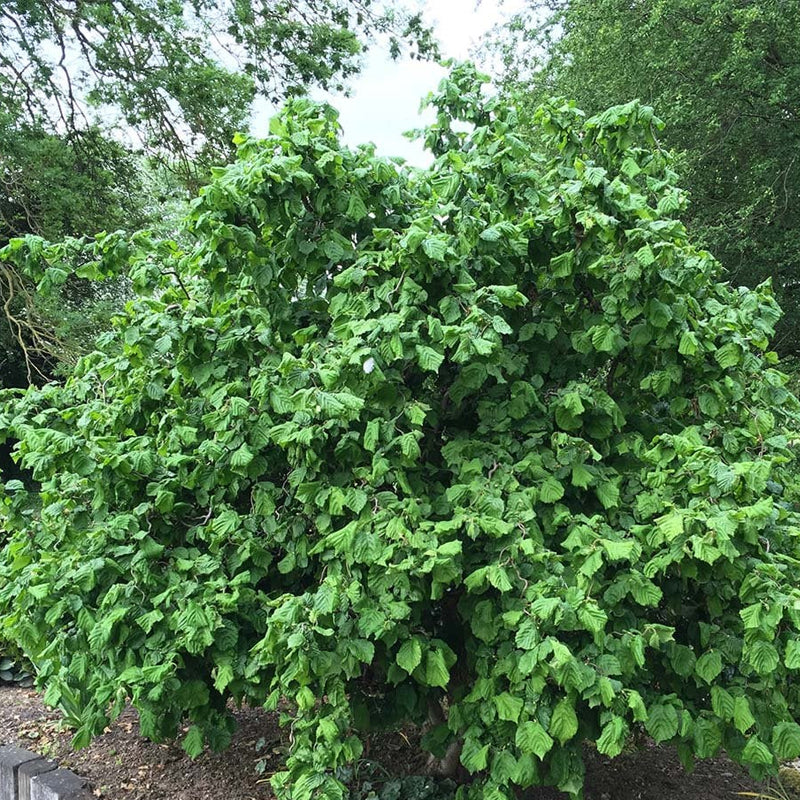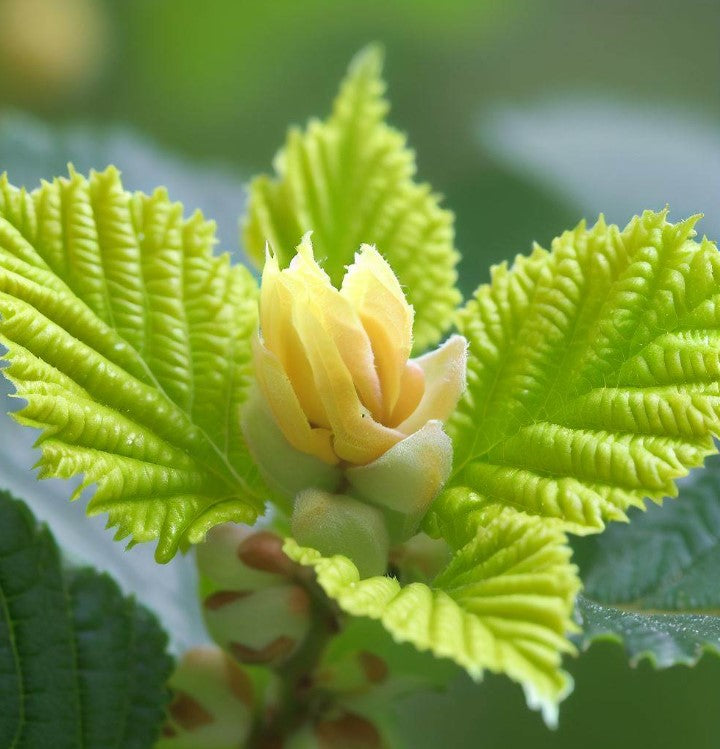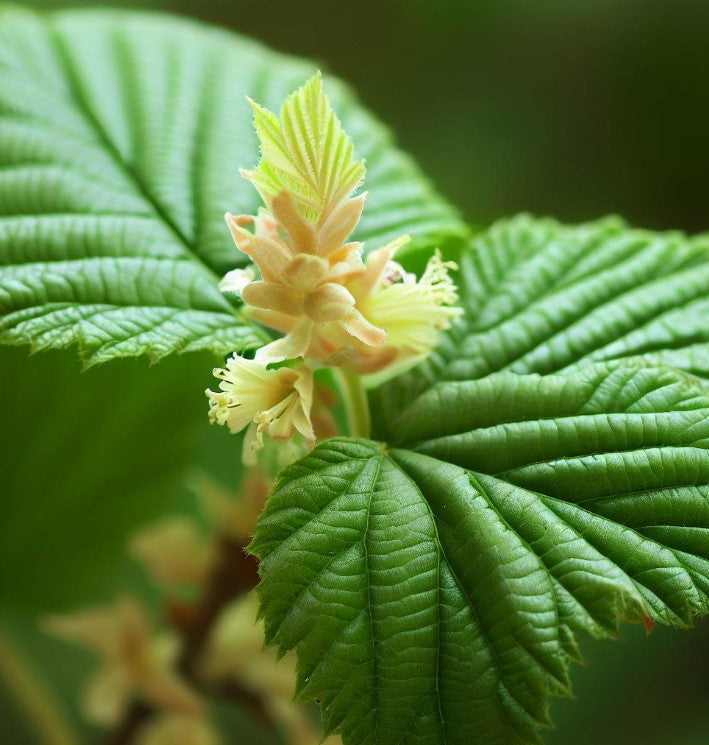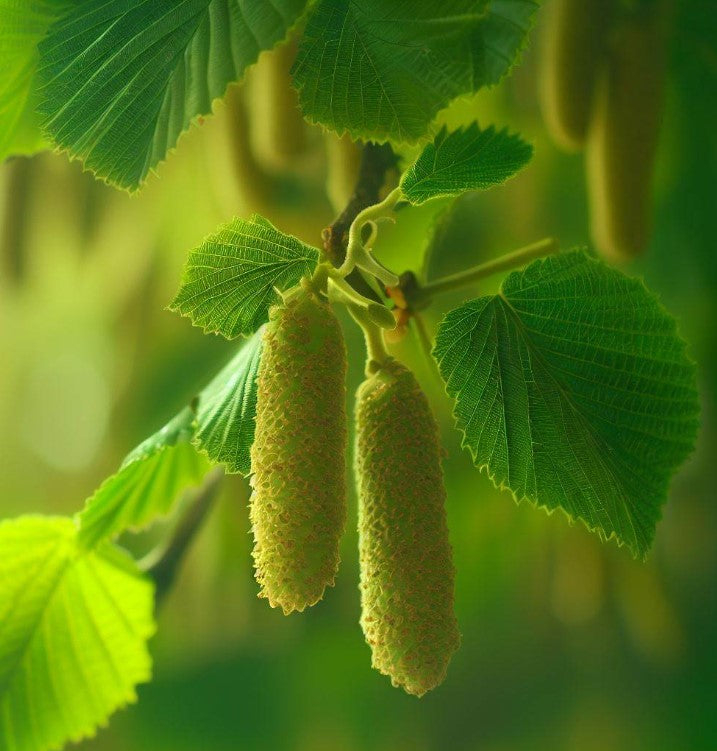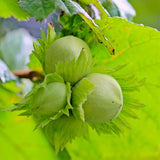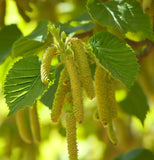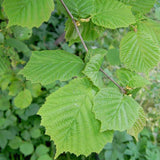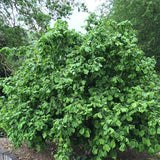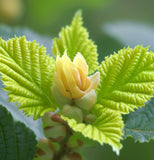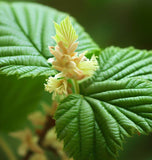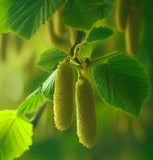Corylus avellana (European Hazel Nut)
Corylus avellana (European Hazel Nut) is a deciduous shrub native to Europe and western Asia. It is highly valued for its edible nuts, attractive foliage, and versatility in landscaping. European Hazel Nut is a multi-stemmed shrub that typically reaches a height of 3 to 5 meters (10 to 16 feet) but can sometimes grow taller. It has a dense, rounded habit with spreading branches. The leaves are rounded, heart-shaped, and toothed, with a vibrant green color that turns yellow in the fall.
Nuts: The primary attraction of European Hazel Nut is its edible nuts, commonly known as hazelnuts or filberts. The nuts are small, round or oval-shaped, and enclosed in a husk. They have a sweet, nutty flavor and are used in a variety of culinary applications, including baking, confectionery, and as a snack. The nuts mature in the fall and are typically harvested when they drop to the ground.
Flowers: European Hazel Nut produces small, yellowish-brown catkins in early spring. The catkins are the male flowers and appear before the leaves. The female flowers are small and inconspicuous, located at the base of the catkins. Pollination occurs through wind dispersal of pollen.
Growing Conditions: European Hazel Nut is adaptable to a range of growing conditions. It prefers well-drained soil but can tolerate a variety of soil types, including loam and sandy soils. It thrives in full sun to partial shade and can tolerate some shade. It is relatively hardy and can withstand cold winters.
Landscape Use: European Hazel Nut is a versatile shrub that can be used in various landscaping settings. It is often planted as a specimen shrub, in mixed borders, or as a hedge. Its attractive foliage and the presence of nuts add visual interest to the landscape. Additionally, the shrub provides cover and nesting sites for birds and other wildlife.
Maintenance: European Hazel Nut is a low-maintenance shrub. It requires minimal pruning, usually done to remove any dead, damaged, or crossing branches. Pruning can be done in late winter or early spring before new growth begins. Regular watering is necessary, especially during dry periods, to ensure proper establishment and nut production.
Cultivars: There are several cultivated varieties of European Hazel Nut available, offering variations in growth habit, nut size, and flavor. Some cultivars are specifically selected for improved nut production, disease resistance, or ornamental qualities. It is worth exploring the different cultivars to find the one that best suits your specific preferences and gardening goals.
European Hazel Nut, Corylus avellana, is a desirable shrub for its attractive foliage, edible nuts, and adaptability to various growing conditions. Whether planted for its culinary value, ornamental qualities, or wildlife benefits, it adds charm and versatility to gardens and landscapes.
Botanical Name : Corylus avellana
Common Name : European Hazel Nut
Height : 12- 24 ft
Spread : 12- 15 ft
Germination Info : Seed requires 60-90 days cold moist stratification
Hardiness zone : 4-8
Average seed per ounce : Approx. 14


